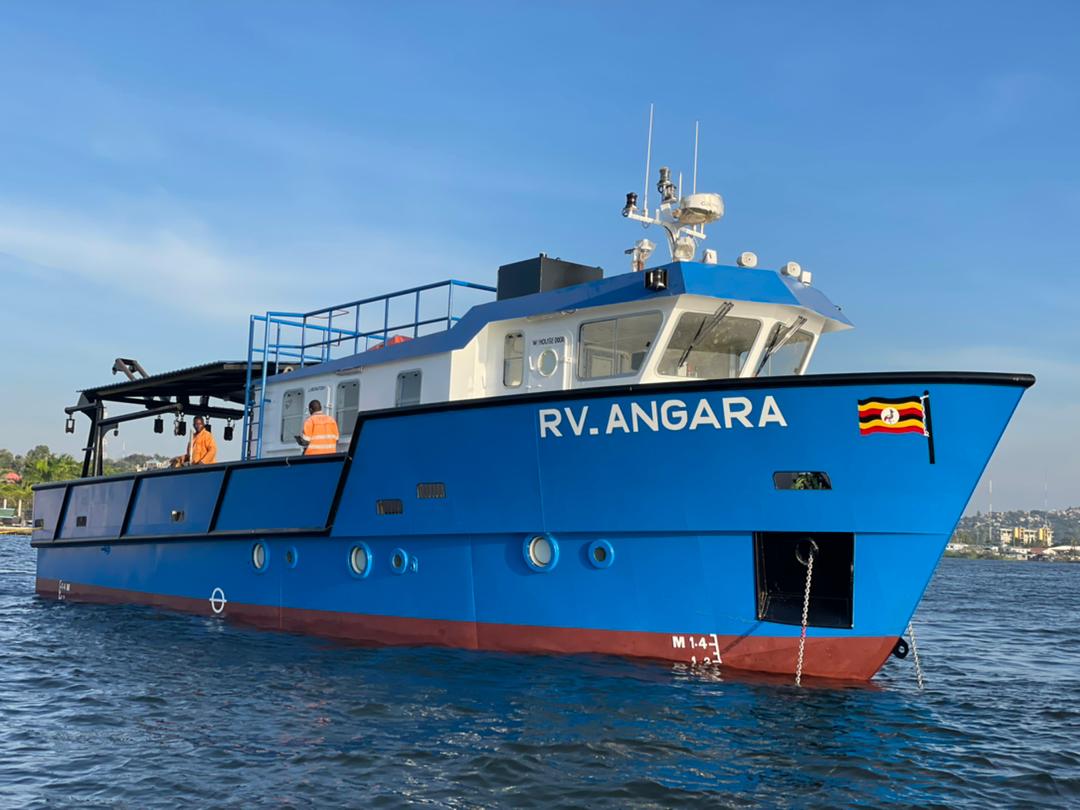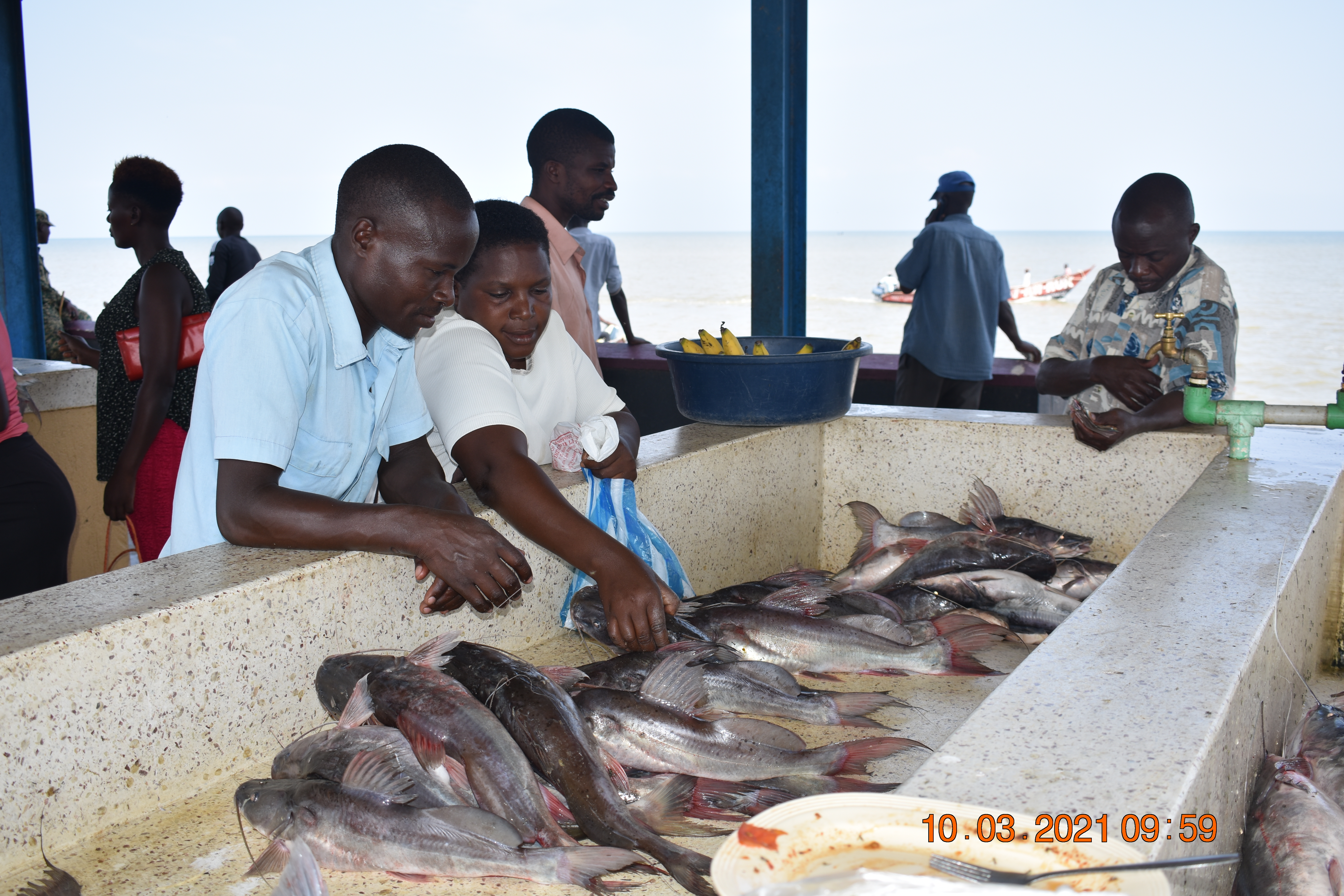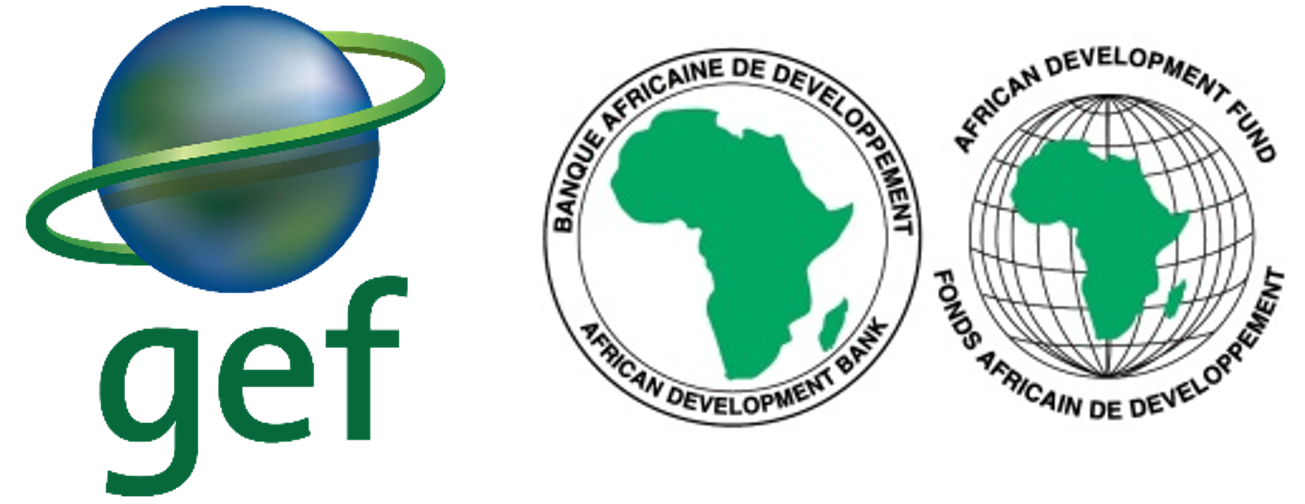The Lakes Edward and Albert are part of the Rift Valley lakes shared between the D.R Congo and Uganda, with a combined basin area of 57,924 km2 – of which 33,452 km2 is in the George-Edward-Semliki sub-basin and 24,472 km2 in the Lake Albert sub-basin. In Uganda, the LEAF II project covers 26 Districts. In DRC, the Lake Edward is in the North Kivu Province and Lake Albert in the Ituri Province. Issues affecting the sustainable exploitation and management of fisheries and water resources in the two sub-basins are mainly related to poverty, weaknesses in policy, laws and institutions, declining biodiversity and over-fishing, degradation of riverbanks and lake shores.
Others are water quality deterioration, water level fluctuations and climatic changes, land and wetland degradation, deforestation, poor mining and quarrying, and conflicts. Despite the challenges, the sub-basins hold significant opportunities for transboundary and in-country development that could enhance food production, energy availability, transportation, industrial development, environmental conservation and other related sustainable development benefits. They also offer unique opportunities as catalysts for equitable and inclusive economic development that can eradicate poverty and minimise the potential for community conflicts.
Overall objective of the project
To sustainably utilise the fisheries and allied natural resources of the Lakes Edward and Albert Basin through harmonised legal framework and policies.
Fisheries Development & Management
(i) Updated and harmonised fisheries and aquaculture policies and legislation jointly adopted by both countries.
(ii) Joint fisheries monitoring, control and surveillance activities supported on both lakes, through; (a) Four patrol boats acquired, equipped and operated (two boats per country) (b) Two surveillance stations constructed and equipped (one per country).
(iii) Joint fisheries data collection and information management system established for the lakes, including; a) Fish stock assessments, catch assessment surveys, lake frame surveys and hydroacoustic survey undertaken on both lakes b) Two fisheries research stations constructed and equipped (one per country). One fisheries research marine vessel acquired and equipped on Lake Albert d) Regional Fisheries Information Management System developed for Lakes Edward and Albert.
(iv) Capacity and skills strengthened for fishing communities in improved fishing practices, modern processing techniques, alternative livelihoods.
(v) Landing sites constructed with fish processing facilities, ancillary feeder roads, potable safe water supply and sanitation facilities. a) Nine Landing sites (five in Uganda, four in DRC) b) 110km of feeder roads rehabilitated/ maintained (50km in Uganda, 60km in DRC) c) Forty boreholes for potable water supply constructed (20 per country) d) Forty sanitation facilities constructed (20 per country).
(vi) Lakes’ aquaculture development potential for cage farming assessed.
(vii) Ten pilot fish cage farms constructed for aquaculture promotion (five per country).
(viii) Other alternative economic activities promoted (e.g.Horticulture, apiculture, poultry, etc).
Integrated Water Resources Management
(i) A Lakes Edward and Albert Strategy and Investment Plan prepared and adopted by the countries.
(ii) A transboundary Lakes Edward and Albert Basin Organisation established.
(iii) Seven Community-based integrated catchment management plans prepared and respective catchment management committees established.
(iv) Basin water resource monitoring and assessment strengthened: a) Six hydro-meteorological monitoring stations constructed and equipped (two in Uganda, 4 in DRC) b) Water quality laboratory constructed and equipped in Uganda c) Two mobile water quality laboratories procured and equipped (one per country) d) Water Resources Database and Information System developed.
(v) Improved control of invasive aquatic weeds.
(vi) Capacity of institutions and beneficiary communities strengthened in sustainable water resources management.
(vii) Navigational and maritime safety plan prepared.
Project Management and Coordination
Implementation of national and regional project activities effectively.
Expected Outcomes
A) Regional Integration and peace building through harmonised policies frameworks, set up of regional institution and collaborative fishermen organizations;
B) Conservation of aquatic ecosystems and biodiversity through restoration of lakes shores, spawning sites and catchments and joint mechanisms for fishery and water resources monitoring and management.
C) Poverty reduction and improvement of food security through development of fishery sector whereby near 45,000 jobs on both sides will be directly and indirectly created with about 50% of these benefiting being women. Multi-sectoral investments including fish landing sites, fish processing units, socio-economic infrastructures, roads and markets will also improve community welfare.
D) Capacity building and Knowledge generation: empowerment of local fisher communities as well as other marginalised groups for sustainable management and utilisation of natural resources; knowledge generation and dissemination and systems to monitor specific risks and threats e.g. climate variability.

Basin Strategy and Investment Plan Prepared and Approved
LEAF II facilitated the preparation of a 30-year Basin Strategy and Investment Plan for the Lakes Edward and Albert Basin (LEA SIP). This includes thematic investments in fisheries and aquaculture management, water resources management and development, crop agriculture and livestock, navigation and maritime safety, hydropower and electrification, watershed and wetland management, aquatic invasive weed control. A Basin institution was also designed. Both the Basin Strategy and Investment Plan and the designed Basin institution await formal endorsement at ministerial level.
Value Addition to Fishing Resources
LEAF II supported the communities around Lakes Edward and Albert to start value addition of fish products in order to maximise their value.
Fisheries Data Collected
LEAF II supported DR Congo and Uganda to collect key fisheries resources data on the two lakes (i.e. all landing sites statistics on fishing gears and number of fishers, fishing effort, fish catch, fish prices, etc), which inform and guide proper fisheries resources management. The collected fisheries data is being incorporated into a regional Fisheries Information Management System for Lakes Edward and Albert (LEA FIMS). All fish breeding areas and critical aquatic habitats were also mapped and characterized, and suitable sites for cage aquaculture development identified and studied on both lakes.
Alternatives Livelihoods Projects Initiated
LEAF II supported the communities to initiate alternative livelihoods ventures to reduce pressure on Lakes Edward and Albert.
Fisheries Management Plan of Lakes Edward and Albert Prepared
LEAF II supported DR Congo and Uganda to develop a Fisheries Management Plan to guide sustainable fisheries and aquaculture management on both lakes.
Patrol Boats for Joint Surveillance
LEAF II supported joint surveillance of the transboundary lakes Edward and Albert by providing four (4) equipped patrol boats to D.R. Congo and Uganda (two per country) and trained 23 coxwains and patrol boat operators from both countries.
Fisheries and Aquaculture Policies Harmonised
LEAF II facilitated the harmonisation of fisheries and aquaculture policies and legislation for Lakes Edward and Albert.
Bilateral Fisheries Agreement Signed
LEAF II facilitated drafting of a bilateral agreement for sustainable management of fisheries resources and aquaculture for the shared Lakes Edward and Albert, which was signed by Governments of D.R. Congo and Uganda on 20th October 2018.
Fish Landing Sites Constructed
LEAF II is constructing priority fish landing facilities, with 5 in Uganda (i.e. at Rwenshama, Mbegu, Mahyoro, Dei and Kitebere) and 4 in DRC (i.e. at Vitshumbi, Kyavinyonge, Mahagi Port and Kasenyi). Two of the nine landing sites are at 100% with the remianing seven at over 80% completion. Each landing site comprises of a fish landing area, fish handling and processing areas, water and sanitation facilities, access roads, and secure fencing. Training is ongoing for the fish landing site committees in operation and maintenance of the facilities.
Mobile Water Quality Laboratories
LEAF II supplied two (2) modern mobile water quality labaratory vehicles to D.R Congo and Uganda, to support water quality management and through the national component, supported DR Congo and Uganda to costruct and equip a Regional Water Laboratory in Uganda that will work hand in hand with the mobile laboratories.

The LEAF II project is jointly implemented by the Democratic Republic of Congo and the Republic of Uganda and is coordinated regionally by the Nile Equatorial Lakes Subsidiary Action Programme (NELSAP-CU) one of the two investment programs of the Nile Basin Initiative (NBI).
Budget
LEAF II: US$ 24.2 Million including: African Development Bank (AfDB) grant of US$ 8.785 Million to DR Congo AfDB loan of US$ 7.321 Million to Uganda, and Global Environment Facility (GEF) grant of US$ 8.1 Million to NELSAP for the LEAF II regional activities.

